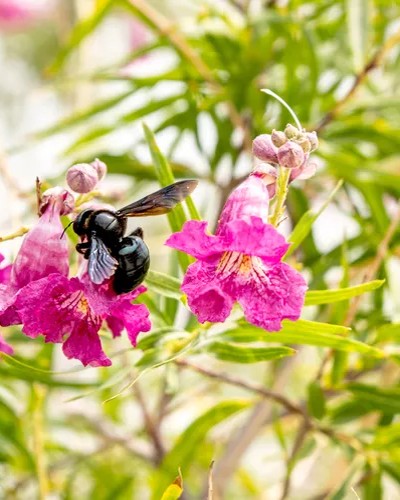With the scientific name of Chilopsis linearis, this slender-twigged small tree or large shrub with deciduous leaves and blossoming dark pink or purple flowers has been used as a remedy for hay fever and colds as well as an expectorant. It can also be used to treat heartburn, stomach problems, diarrhea, cramps, bladder infections, and dandruff. The USDA notes that the desert willow flowers, leaves, and bark were used in hot poultices and to make a soothing tea for coughs.
Desert willow thrives in a dry creek bed or gulch that temporarily fills with water after heavy rains and can survive in temperatures as low as 10°F. The plant’s flowers and seed pods are edible and can be used to feed honeybees and grazing cattle. For more information about desert willows, check out Field Guide to Texas Trees (1999) and Foraging Texas (2008).

